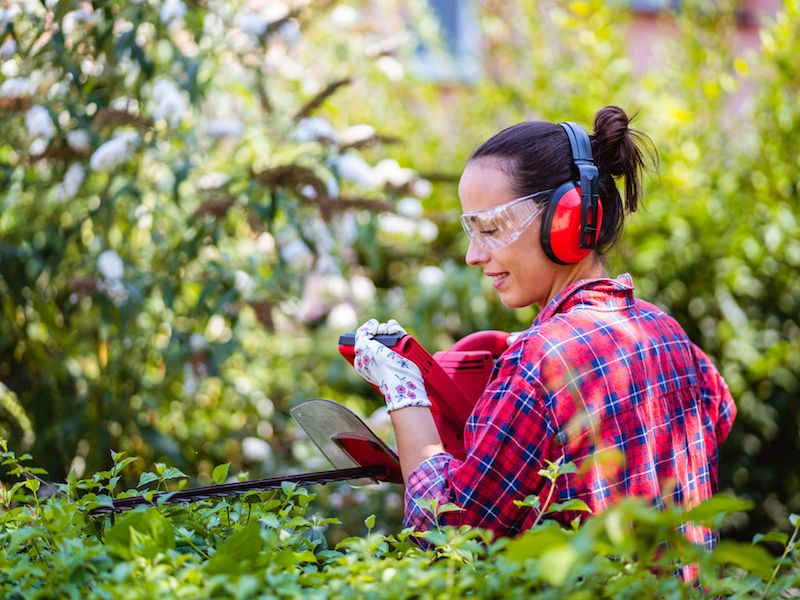
Eating right and safeguarding your hearing have some similarities. It sounds good, but not many of us have a very good idea of where to begin. This is especially true if you don’t think your daily environment is particularly noisy and there aren’t any noticeable risks to your ears. But your ears and senses can be stressed by day-to-day living, so your auditory acuity can be preserved if you apply these tips.
If you want to continue to enjoy the sounds around you, you need to do everything you can to impede down the degeneration of your hearing.
Tip 1: Ear Protection You Can Wear
Using hearing protection is the most sensible and basic way to safeguard your ears. This means that decreasing loud and damaging sound is a basic step you need to take.
This means that when it’s called for most people will want to use hearing protection. Two general forms of protection are available:
- Ear Muffs, which are placed over the ears.
- Ear Plugs, which are placed in the ear canal.
Neither form of hearing protection is inherently better than the other. Each style has its positive aspects. What’s important is that you find some hearing protection that you feel comfortable wearing.
Tip 2: Know When Sound Gets Dangerous
But how do you know when to wear hearing protection? Noise that is painful is normally regarded as harmful. But much lower volumes of sound can injure your ears than you might believe. The sounds of traffic, for example, are loud enough to begin damaging your hearing after just a couple of hours. An important step in protecting your hearing, then, is knowing when sound becomes harmful.
Typically sounds become dangerous at the following levels:
- Over 100 dB: This is where you can injure your hearing very quickly. Injury is done in around thirty seconds with sounds above this threshold. Jet engines and rock concerts, for instance, can injure your ears in around thirty seconds.
- 95-100 dB: This is about the noise level you’d expect from farm equipment or the typical volume of your earbuds. After about 15-20 minutes this level of sound becomes hazardous.
- 85 decibels (dB): After around two hours this level of sound is hazardous.This is the level of sound you’d expect from a busy city street or your hairdryer.
Tip 3: Your Phone Can Become a Sound Meter
Now that we have a general idea of what levels of sound may be hazardous, we can take some steps to ensure we limit our exposure. The trick is that, once you’re out and about in the real world, it can be challenging to determine what’s too loud and what isn’t.
That’s where your smartphone can become a handy little tool. There are dozens of apps for iPhone, Android, and everything in between that turn your device’s microphone into a sound meter.
In order to get an idea of what harmful levels of noise actually sound like, use your sound meter to confirm the decibel level of everything you are hearing.
Tip 4: Monitor Your Volume Settings
Most people today listen to music via their phone or smart device, and they usually use earbuds while they do it. This creates a risky scenario for your hearing. Over years of use, earbuds set to a sufficiently high volume can cause significant damage to your ears.
That’s why safeguarding your ears means keeping a focused eye on your volume control. You should never increase the volume to drown out sounds elsewhere. And we suggest using apps or settings to make sure that your volume doesn’t unintentionally become dangerously high.
If your hearing begins to decline, earbuds can become a negative feedback loop; you could find yourself constantly raising the volume of your earbuds in order to make up for your declining hearing, doing more damage to your ears in the process.
Tip 5: Get Your Hearing Examined
You may think of a hearing test as something you schedule when your hearing has already started to decline. The problem is that it’s not always easy to detect a problem in your ears without a baseline to compare results to.
Generating data that can be used for both diagnostic applications and for treatment can best be accomplished by scheduling a hearing exam and screening. This will give you a little extra context for future hearing choices and ear protection.
Pay Attention to Your Hearing
In an ideal world, protecting your ears would be something you could do constantly without any difficulty. But there will always be obstacles. So whenever you can and as often as possible, protect your ears. Also, get regular hearing examinations. Hopefully, these guidelines will give you a good start.